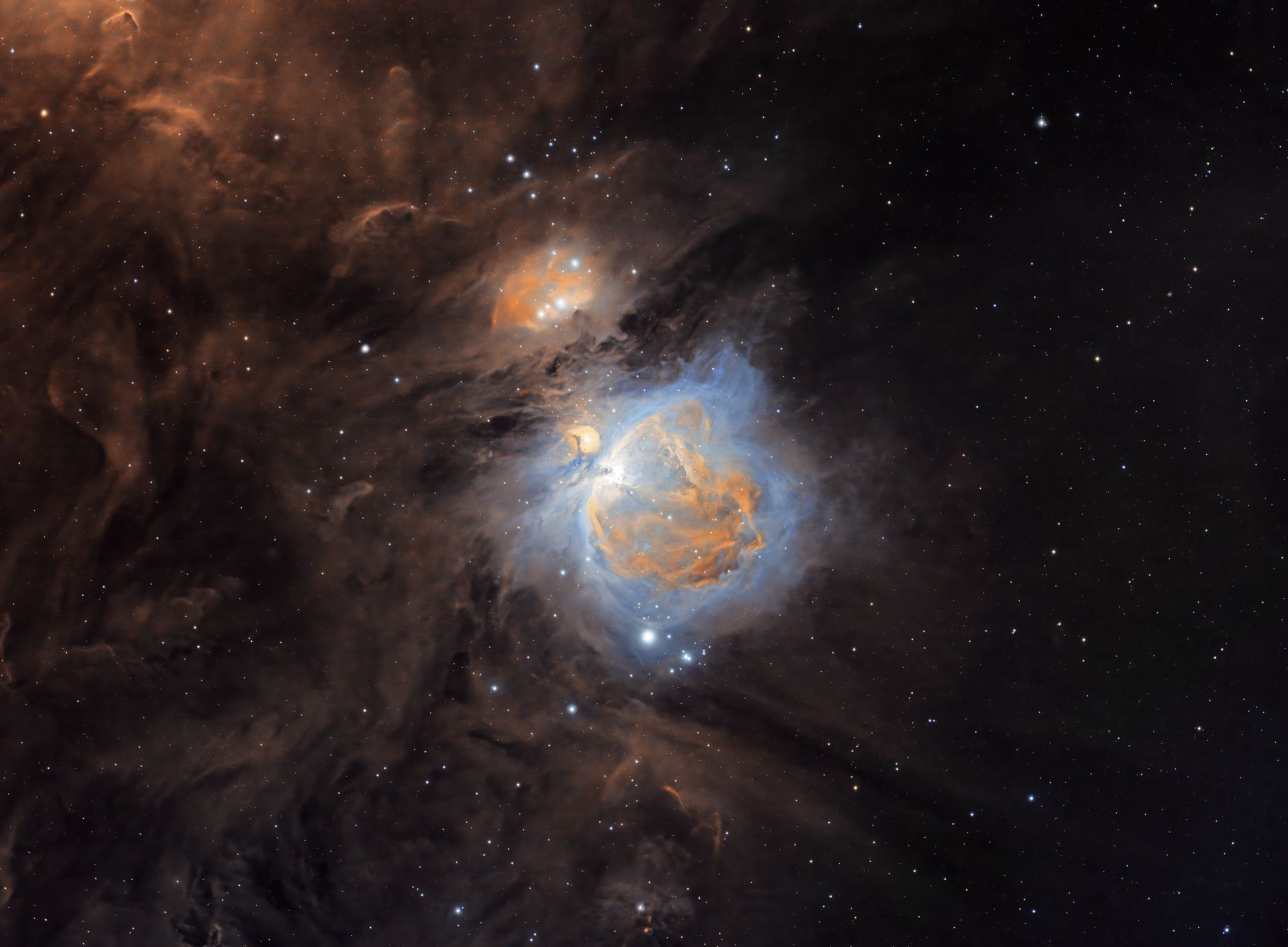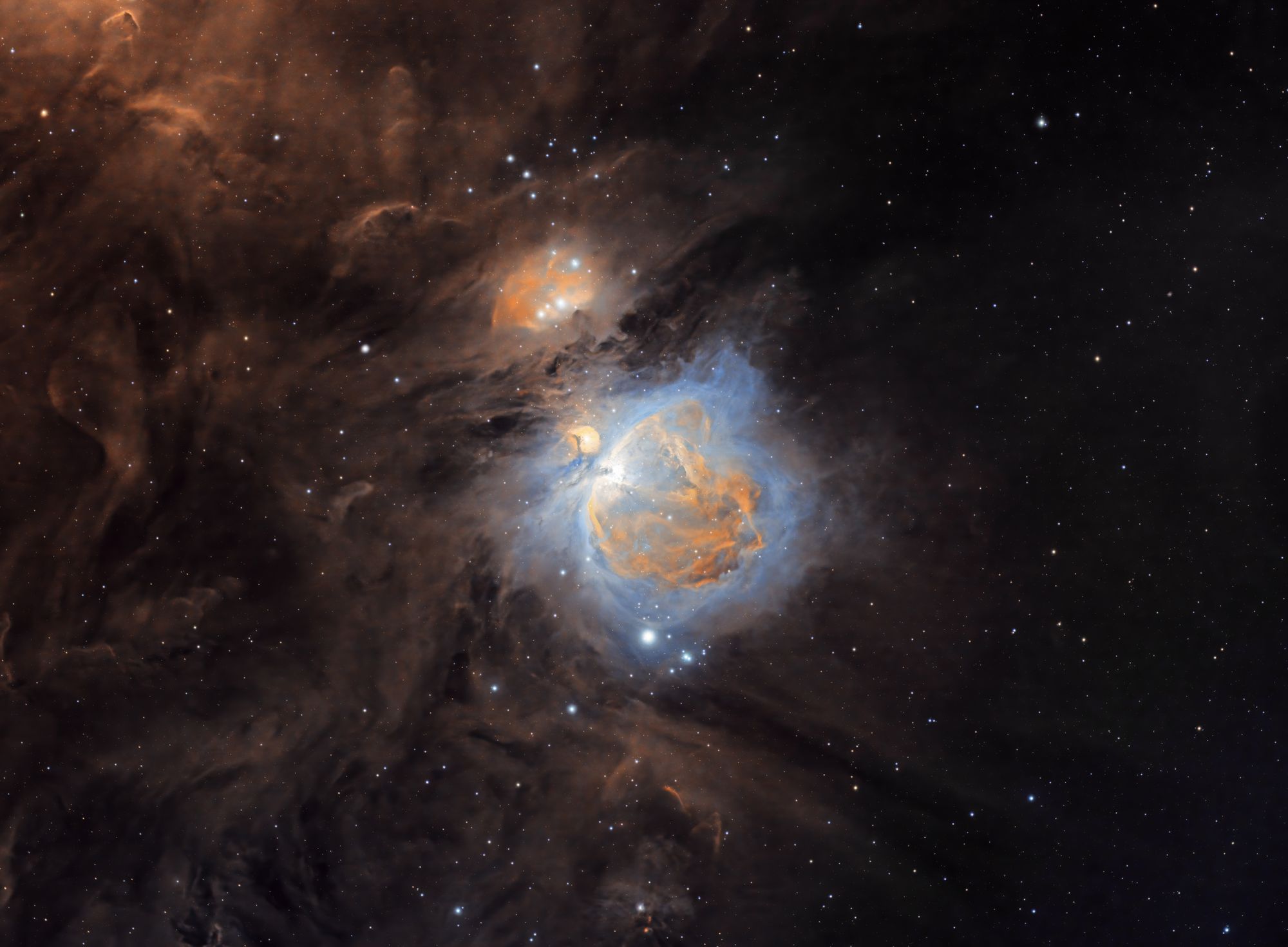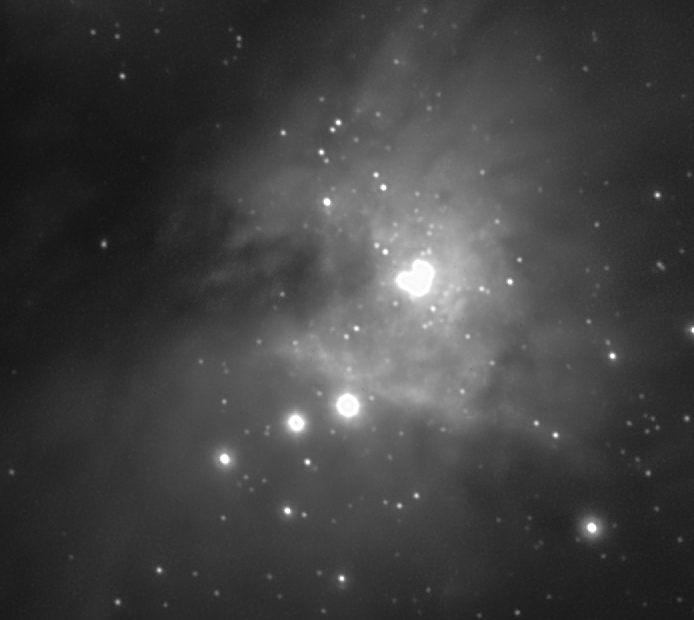The Dense & Dusty Orion Nebula

Next to the Andromeda Galaxy, the Orion Nebula (also referred to as “Great Nebula in Orion” in older texts) is likely the first target for any fledgling amateur astrophotographer in the Northern Hemisphere.
It's so bright it actually appears to the naked eye essentially like a star—and is visible even from light-polluted areas. Even with the smallest binoculars the nebula becomes quite apparent.
What's less well-known is that this bright center region is home to an open star cluster called the Trapezium, which are intensively lighting up the surrounding dust from the nebula, making it actually hard to photograph because of the danger of overexposure—something that doesn't really happen otherwise in deep-sky photography.
One trick to get a handle of these bright and densely clustered central stars is to use and IR pass filter, that reduces the visibility of the gasses and dust and brings out the stars better (second image below). These filters only let through wavelengths in the red and infrared, for my filter from about 750nm and higher. Normally used for planetary astrophotography (e.g. of Mars), they can be of utility for the occasional deep-sky object.
The other interesting thing in the image is the large amount of dust lanes emanating from and surrounding the nebula, and indeed a large area of the constellation Orion.



Total exposure time: 2h 10m (7,800s)
Shot from my driveway near Tucson, AZ in April 2022
Telescope: William Optics RedCat 51 (250mm focal length ƒ/4.9)
Camera: ZWO ASI294MM Pro
Filters: ZWO 7nm narrowband filters in Sulphur-II, Hydrogen alpha and Oxygen-III, ZWO RGB filters, Astronomik ProPlanet 742 IR-pass filter
Mount: iOptron CEM26
Copyright © 2022 by Thomas Fuchs. All rights reserved. You're free to use any of my images as wallpaper on your computer or phone. For other uses, including commercial use, derivative works or republishing, please contact me at thomas@slash7.com.